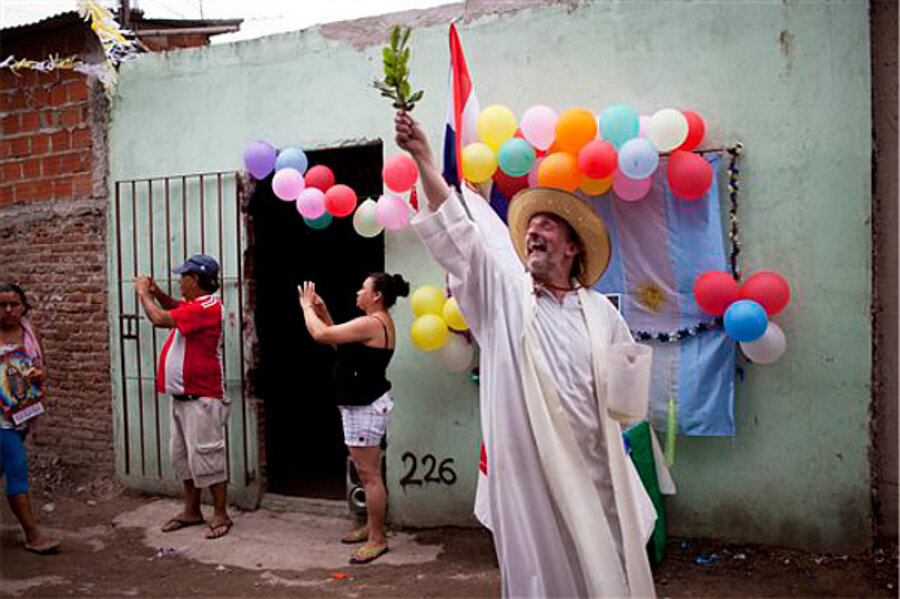Argentine slum honors 'Blue Virgin,' remembers pope
Loading...
| BUENOS AIRES, Argentina
Thousands of Paraguayan immigrants living along the polluted Riachuelo river in Argentina's capital celebrate their "Blue Virgin" every year with a grueling but joyful 10-hour procession that winds through every corner of their slum. Last year, their feast day's Mass was led by none other than Buenos Aires Archbishop Jorge Mario Bergoglio, who has since become their beloved "slum pope."
That Time magazine named Pope Francis "person of the year" on Wednesday makes perfect sense to those who knew him as the church leader who saw to it that every major slum in the city had a working parish.
"For us slum-dwellers, it's a point of pride that Francis has been here drinking mate (an herbal tea shared communally by South Americans) and spending lots of time with the poorest people, and that he's now recognized by the entire world. The church that he promotes is one that has really helped the poor and the marginalized, like me," said Miguel Sergio Leiva. "I watched the whole procession when I was homeless and taking drugs, and now I'm an active member of the church of Caacupe."
The slum's parish is named for Paraguay's patroness, "Our Lady of Caacupe," commonly called the "Blue Virgin" by the half-million Paraguayans who migrated to Argentina, many of whom live in ramshackle settlements known as "misery villages" in and around Buenos Aires.
Padre Toto, one of many "slum priests" long supported by Francis, led thousands in this year's procession on Sunday, walking all day long through suffocating heat and humidity. He blessed humble homes decorated with flags and balloons with water from a plastic jug, and hugged victims of violence. Many people put up altars to the virgin, and some displayed the image of Francis, "the pope of peace."
"I think the recognition of Time magazine is good news, because Pope Francis embodies one of the values of a church that's more missionary, closer to the people, more austere, more in keeping with the Gospel," the priest said. "He had the genius of knowing how to express this sense of the church and hopefully his way of being will catch on with other political leaders, business executives, sports figures, etc. His leadership is inspiring."







